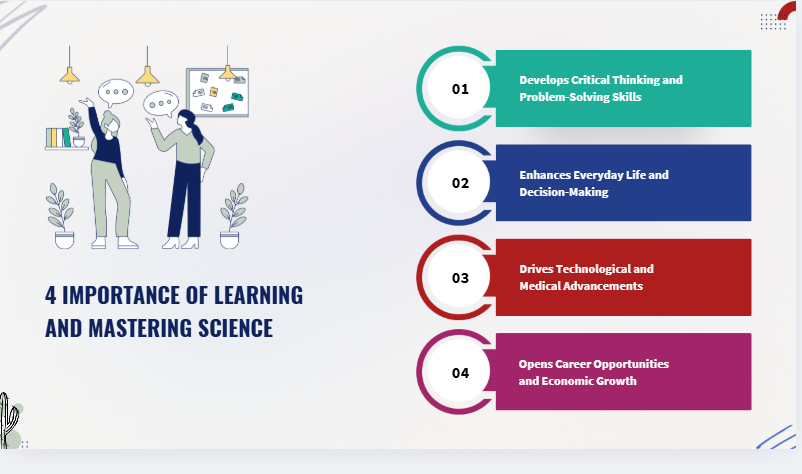GENERAL
Blockchain and Cybersecurity: Can Blockchain Technology Improve Security?

In our increasingly interconnected digital world, the need for robust cybersecurity has never been more critical. As cyber threats evolve, businesses seek expert guidance to navigate the complexities of digital security.
This is where the intersection of blockchain and cybersecurity, supported by professional cybersecurity consulting services, offers a powerful solution.
This blog delves into how blockchain technology can revolutionize security, providing a decentralized and immutable shield against modern cyberattacks.
The Foundation: Understanding Blockchain’s Security Pillars
To appreciate the whole effect of cybersecurity with Blockchain, we have to understand the security principles underlining this very technology. Blockchain, essentially, is a distributed ledger- the record of transactions that anyone can share but no one can modify. This unique structure offers an unnerving resistance to cyber threats.
- Immutability: The Unshakable Chain: The moment the data gets recorded on Blockchain, data cannot be changed or deleted. Immutability forms the basis of data protection on the blockchain. This keeps the record intact and safe.
- Decentralization: Trust Dissemination: Data in blockchain does not exist on a single centralized system; instead, it is distributed among a network of nodes, thus making this form of security decentralized. This means there is no single-point failure, making it extremely difficult for hackers to hack through the entire system.
- Cryptography: The Digital Shield: Blockchain uses advanced principles of cryptography to secure information and transactions. Such blockchain encryption provides confidentiality, integrity, and authenticity of information and other sensitive details that are felt to have unauthorized access.
- Consensus Mechanisms: Validation through Trust: Before a transaction goes through and gets written on a block, it should be passed through consensus among other network members to be validated. Hence, this also eliminates fraud, as only legitimate actions will be recorded.
Unlocking the Potential: How Blockchain Enhances Cybersecurity
The inherent security features of blockchain offer a powerful toolkit for addressing a wide range of cybersecurity challenges. Let’s explore some key areas to know how blockchain enhances cybersecurity and is making a significant impact.
1. Transforming Financial Security: The Role of Blockchain
The financial sector, a prime target for cybercriminals, stands to gain immensely from how blockchain improves cybersecurity in financial services.
- Confronting Fraud: A Ledger That Shuns Secrecy: Since the blockchain is transparent and tamper-proof, all its transactions can be tracked in real-time, thus enhancing the detection and prevention of fraud.
- Cross-Border Transactions: Payments Made Easy: Cross-border payments are made more effortless and secure by blockchain, reducing reliance on intermediaries and the chance of fraud.
- Smart Contracts Secured: With Automation Comes Trust: Keeping smart contracts secure is very vital. Smart contracts are self-executing contracts that run on a blockchain, which facilitates the automation of financial transactions and provides them with a level of security against human error and tampering.
2. Verifying Identity and Preventing Fraud: A Blockchain-Powered Approach
Identity theft and fraud are rampant in the digital world. Using blockchain for identity verification and fraud prevention offers a promising solution.
- Encouraging Users: Autonomous Identity Handling: It gives users access to distributed identity management to share and serve private personal data to an authorized audience, further preventing identity theft.
- Guaranteeing Legitimation: Secure Digital Credentials: With blockchain, it is possible to issue and verify digital credentials like educational certificates and professional licenses.
3. Safeguarding Data and Securing Supply Chains: Blockchain’s Role
Protecting sensitive data and ensuring supply chain integrity is paramount for businesses—cybersecurity with blockchain-based data protection and distributed ledger security offers robust, seamless solutions and exceptional support tailored for you.
- Secure Data Storage: When storing sensitive data like medical records or intellectual property, blockchains will act as safe and immutable mechanisms to store such sensitive data because they prevent unauthorized access and tampering.
- Supply Chain Transparency: Tracking and Tracing: Blockchains can track products and materials throughout the supply chain, guarantee authenticity, and help prevent counterfeiting. It also makes the supply chain more transparent.
4. Enhancing Risk Management and Preventing Cyber Threats: A Proactive Approach
Proactive risk management and cyber threat prevention are essential for business continuity. Blockchain in risk management and cyber threat prevention with blockchain offers significant advantages.
- Comprehensive Audit Trails: Ensuring Accountability: Blockchain’s immutable ledger provides a comprehensive audit trail, facilitating risk assessment, compliance, and accountability.
- Real-Time Threat Detection: Monitoring and Response: Blockchain can monitor network activity and detect anomalies, enabling real-time threat detection and response and minimizing the impact of cyberattacks.
Looking Ahead: The Future of Blockchain in Cybersecurity
The more mature blockchain technology becomes, the more obvious its ability to take over cybersecurity. The future of cybersecurity with blockchain is becoming brighter: many applications of blockchain in security are coming up.
- Securing IoT Devices: Protecting the Connected World. Blockchain does not affect these new channels but provides secure communication and data management for the growing number of applications and thus reduces the risks associated with the vulnerabilities of IoT devices.
- Transparent Voting Systems: Ensuring Electoral Integrity by creating transparent and tamper-proof voting systems; blockchain ensures the integrity of elections and puts up public trust in the whole affair.
- Secure Healthcare Data Sharing: Improving Patient Care. This allows sharing of healthy data between healthcare providers safely and in an interoperable way to ensure safe patient care and improve medical research.
Navigating the Challenges and Considerations
There are security upsides with blockchain, but not without hurdles and considerations.
- Scalability: Involving High Volume Transactions: Blockchain networks mainly suffer from the scalability issue when they handle high volumes of transactions.
- Interoperability: To Achieve Uninterrupted Integration: The interoperability among the blockchain platforms must be in place for widespread adoption.
- Regulatory Uncertainty: Contributing to Legal Considerations: The regulatory framework is still developing around blockchain technology, creating uncertainty in the path businesses take.
- Cybersecurity Consulting: Provide Expert Assistance: Regarding blockchain systems’ proper configuration, implementation, and maintenance, the involvement of cybersecurity consulting would prove very useful.
While blockchain offers significant security benefits, it’s essential to acknowledge the challenges and considerations.
Embracing the Secure Future: Blockchain and Cybersecurity Working Together
The synergy between blockchain and cybersecurity presents a paradigm shift in how we approach digital security. By harnessing the power of blockchain technology for security, we can create a more secure and resilient digital ecosystem. Blockchain security applications are only going to grow as time moves forward.
The journey towards a more secure digital future requires collaboration and innovation. Cybersecurity consulting services can be crucial in guiding organizations through the complexities of blockchain implementation. Embracing the potential of decentralized security solutions is not just an option; it’s a necessity in an increasingly interconnected world.
By understanding how blockchain improves cybersecurity, we can unlock its transformative potential and build a safer and more trustworthy digital future.
GENERAL
Mastering High School Biology: How Online Tutors Can Help

We learn the workings of life on this planet and the function of cells and organisms through biology. Biology explains the world around us from cellular processes to whole ecosystems. Memorizing and applying countless facts makes high school biology challenging for many students.

Source: Canva
Finding a tutor is one way to simplify biology. However, online tutors offer customized assistance and walk the student through complex subjects easily and interestingly. You might have a hard time either memorizing the scientific terms or biology questions, so an online tutor can make your learning easier and more fun.
How Online Science Tutoring Removes The Complexity From Biology
Many students struggle to keep up with biology lessons in school. Large class sizes and fast-paced teaching can make it difficult to ask questions or request extra help. Enter online science tutoring, which can work wonders in a young student’s life. Students receive more hands-on attention with one-on-one tutoring and explanations in a way that resonates with their learning style.
Tutors explain hard-to-understand topics by dividing them into smaller, simpler steps, allowing you to grasp ideas of cellular division, DNA replication, and the circulatory system better.
Rather than pore over simple facts, students learn how various biological processes relate to one another in a way that’s easier to remember and apply. Tutors offer additional practice and real-world examples to help students understand the material more thoroughly.
Fostering Confidence in Biology
Students who find biology difficult often become frustrated and demotivated. If students struggle to grasp a concept in science, they might disengage from science entirely. A tutor builds confidence; by making the process of learning interactive and interesting, a tutor helps build confidence.
When students are given clear explanations and support in their learning, they report being more able to deal with difficulties in biology. Tutoring gives students the freedom to ask questions without shame, practice at their own pace, and review difficult concepts as often as necessary. As they learn more about biology, their confidence builds and they do better in class and on tests.
How One-on-One Tutoring is the Best
In a traditional classroom, teachers must spread their attention across many students. That means they can’t always devote extra time to ensuring one student grasps a challenging subject. Conversely, one-on-one tutoring is made to meet the student’s needs.
An online tutor can help to adjust the lessons according to the student’s strengths and weaknesses. For example, if a student has a hard time understanding genetics but enjoys studying ecosystems, the tutor can build on that interest to explain challenging concepts. This tailor-made approach improves the experience and effectiveness of learning.
Bringing Excitement Back to Biology
When it comes to biology, the prevailing notion among students is that it is purely about memorization of content and facts; however, this outlook encompasses only a fraction of the true nature of biology. A good tutor who is interactive and entertaining always uses charts, experiments, and examples from our everyday lives to make the learning process productive.
So, instead of simply reading a section on the digestive system, a tutor could illustrate how food moves through the body with animations. It can be easier to learn about photosynthesis when students recognize how it applies to the plants they see in their backyard. These creative techniques make biology much more fun and easier to recall.
These include quizzes, for example, along with discussion-based learning and games, all of which online tutors can use to keep students engaged. When students like what they are learning, motivation is high and retention is greater.
Tutoring for Help with Preparing for Exams
Biology tests often require students both to memorize many details and to apply what they learned. It is hard to study individually when there is a vast amount of information. A tutor helps the students to keep a check on their study plan and focus on the important concepts.
Tutors offer practice questions, clarify tricky topics, and impart test-taking strategies. They also teach students to organize their notes, compile flashcards, and review previous tests to identify weak spots. Students are confident and do well on their tests with the right preparation.
How Personalized Learning Improves Grades
A lot of students also have difficulty with biology simply because they don’t know how to study. It’s not always enough to just read a textbook. A tutor guides students’ discovery of learning methods that best work for them.
Some students grasp concepts better when watching videos, while others benefit from hands-on activities. Tutors identify these learning styles and tailor lessons accordingly. This allows students to learn the information better, which not only improves their grades but also gives them a better understanding of biology.
Common Biology Challenges And How To Tackle Them
Biology is a subject where some things are much easier to understand than others. Complicated processes like cell division, evolution, and the nervous system are difficult for students. All the following topics have many steps and are therefore not easy to follow.
Tutors can help break these topics into smaller portions and find ways to clarify them. Rather than rote learning, which often means trying to memorize everything all at once, students learn to logically understand each step of every process. This makes learning biology easier and more memorable.
Scientific terminology is another common challenge. The difficult terminologies present in biology can bamboozle students. A tutor uses mnemonic devices and practice examples to assist students in remembering these terms. In this way, learning becomes much more natural and less stressful.

Source: Canva
Ways in Which Parents Can Support Biology Learning
Supporting curiosity and creating a positive learning environment at home goes a long way. Even simple things like watching nature documentaries, discussing science wonders, or visiting a science museum can help make biology more fun.
If a student struggles with the subject, parents can find an online tutor who offers the additional help required. With the right encouragement and support, any student can become a biology whiz.
Conclusion
Biology is an incredibly interesting subject but can be difficult without proper support. In online science tutoring, the moderator guides students through complex topics, making it easy for them to learn and enabling them with better ways of understanding, building confidence, and achieving better grades.
A good tutor can help students create solid study habits, be prepared for tests, and develop a love for science. No matter if a student is falling behind or simply looking to get ahead, online tutoring provides valuable guidance for success.
FAQs
Can online tutoring help with bio-lab work?
Yes, online tutors can demonstrate lab protocols, guide students as they interpret results, and provide virtual experiments that enhance understanding.
What if I have difficulty memorizing scientific terms?
Tutors work with students on memory techniques like mnemonics and visualization to better recall biology terms.
Is online tutoring beneficial for students who already perform well in biology?
Yes, tutoring can deepen your understanding, help you explore advanced topics, and ensure you stay ahead of your class.
GENERAL
DMX and LED Lighting: Understanding Digital Multiplex Control and Its Impact

The DMX system represents one of the most advanced lighting control technologies, and it has become the primary standard for contemporary applications. DMX represents a common term found in LED lighting discussions yet remains unclear to people who lack understanding of its technology definition and operational principles. An led tape light dmx system allows precise control over brightness, color, and effects, making it ideal for dynamic lighting displays. The standardized protocol DMX stands for Digital Multiplex, which controls lighting effects across stage productions, architectural lighting applications, commercial displays, and home automation systems. DMX operates as a crucial modern lighting system component because it allows users to control numerous fixtures simultaneously with both precision and flexible control.

The Origin and Development of DMX
In 1986, USITT established the DMX512 protocol to solve problems that plagued earlier lighting control systems. The adoption of DMX introduced a new era in lighting control systems because analog signals previously used extensive wiring and produced unreliable results. The installation of lighting fixtures became complicated because each fixture required its own specific control line.
DMX introduced a digital communication system enabling controllers to control multiple fixtures through one unified data cable. Standardization of lighting systems through DMX led to simplified setup processes and enhanced reliability along with extended programming potential. The development of DMX technology has extended its original theater-based usage to become an essential control system for numerous industries that need precise lighting management.
How DMX Works in LED Lighting
The digital protocol DMX functions as a communication system that directs controllers to send signals that control lighting fixtures for intensity levels, color selection, and movement patterns. The standard setup for DMX includes a controller unit and DMX-enabled fixtures, which are linked through data cables to exchange instructions. The protocol manages communication through a step-by-step packet system that controls the various functions of connected fixtures.
The standard DMX system works through 512 channels, which enables the control of 512 separate parameters across each universe. Each lighting device receives data from its assigned address within the universe and understands its intended instructions but ignores data meant for other fixtures. The structured design allows designers to build intricate lighting setups because every fixture executes commands exactly as programmed.
LED lighting benefits from DMX control through its ability to provide users with extraordinary control over brightness settings, color temperature adjustments, and dynamic effects operation. The RGB and RGBW LED strips obtain their wide color range, and fluid lighting transitions through DMX signal control. DMX proves most suitable for applications needing automated and coordinated lighting displays because it allows users to synchronize various lights and effects.
Benefits of LED Lighting Systems
The main benefit of using DMX control for LED lighting systems is its ability to deliver exact and customizable control over numerous fixtures. With DMX, users can easily program their lighting sequences and automate transitions between effects because this system eliminates the need for manual adjustments. Stage productions greatly benefit from this advanced control function since it ensures perfect synchronization between lighting effects, musical performances, and stage effects.
DMX implements dimming and scheduling features that improve energy efficiency. The DMX compatibility of LED fixtures enables programmers to set intensity levels that manage power usage while preserving appropriate lighting conditions. The architectural lighting industry uses this capability to program building and monument illumination following specific patterns and event schedules.
DMX provides scalable operations, which is a significant advantage. The DMX protocol enables users to control either small LED fixture collections or extensive venue-wide lighting networks through a system that provides easy integration and growth capabilities. The DMX protocol enables control of numerous lighting parameters through multiple universes, which makes it suitable for large productions, concert events, and commercial installations.

DMX Applications Beyond Entertainment
The entertainment industry created DMX, but today, it serves purposes that exceed live performance illumination. Building facades, bridges, and landmarks get dynamic color-changing effects through architectural lighting designers who employ DMX technology. The implementation of DMX-controlled LED fixtures in urban environments enables cities to generate spectacular nighttime scenes, which simultaneously improve their public areas and attract tourists.
Retail businesses utilize DMX-controlled lighting because adjustable schemes through DMX enable behavior modification among customers while making their displays more noticeable. DMX controls allow stores to set ambiance lighting and create highlight effects that both improve customer shopping experiences and spotlight particular merchandise. DMX controls the lighting systems of restaurants and hotels alongside event venues to help them build distinctive settings that match their brand personality.
Modern residential smart home automation systems now use DMX-compatible LED lights to enable homeowners to customize their lighting environments. The sophistication of residential lighting has increased through DMX technology, which enables users to modify living space illumination and match outdoor lights with music or seasonal elements.
Understanding DMX Addressing and Configuration
Novice users of DMX need to learn how to properly address and configure their lighting fixtures on a DMX network. Every DMX-compatible light needs a starting address to specify the data stream section it will process. The proper planning of addressing becomes essential because fixture types need multiple channels to handle brightness, color, and movement controls while ensuring no address conflicts occur.
Real-time updates of all connected fixtures occur through the continuous data stream from a DMX controller system. Programmers who work with DMX-controlled LED lighting systems benefit from interfaces between software controllers and hardware consoles that enable user modifications and preset storage along with automated sequence control. Applications that need dynamic lighting effects, such as stage shows and multimedia installations, depend heavily on this flexible system.
Conclusion
The Digital Multiplex system (DMX) transformed LED lighting control through its ability to deliver precise control and flexible operation in multiple industries. DMX started its life in theater staging before spreading across architectural spaces and commercial buildings and finally reaching residential areas. The tool provides essential capabilities to manage various fixtures alongside dynamic effect generation and smart lighting integration for designers and lighting professionals. DMX technology will advance alongside technological progress through the implementation of wireless capabilities, IoT integration, and novel lighting effects. DMX-controlled LED lighting stands as a versatile tool for creating mesmerizing visual effects since it can light up stages at concerts or improve building exteriors and retail environments.
GENERAL
The jelly roll pre show ritual: Behind the Scenes of a Musical Journey

Before the spotlight shines on performers, there’s a unique moment that unfolds behind the scenes: the jelly roll pre show ritual. This isn’t just a quirky routine; it’s an essential part of preparing for a live performance. Musicians across genres embrace this tradition to center themselves, build camaraderie, and ignite their creative spirits.
Curious about what goes down before those electrifying moments on stage? Join us as we peel back the curtain on this fascinating ritual. Discover its origins, significance for artists, personal stories from those who participate in it, and how it affects audiences too. Whether you’re a fan of live music or an aspiring performer yourself, you’re bound to find something magical within these pages!
History and origins of the ritual
The jelly roll pre show ritual has roots that can be traced back to the vibrant culture of early American music. Originating in the jazz and blues scenes, these rituals were often informal gatherings where musicians would connect before taking the stage.
As artists sought a way to calm nerves and bond with fellow performers, unique practices emerged. These included group chants, dance movements, or even shared meals. Each artist added their personal touch, creating an eclectic mix of traditions.
Over time, this ritual evolved beyond just musicians. It became a crucial part of live performances across genres. The shared energy fosters camaraderie among performers while setting a focused atmosphere.
Today’s jelly roll pre show ritual reflects both history and innovation. Artists blend traditional elements with modern influences—a testament to its enduring appeal in the world of performance art.
The significance of the ritual for performers
The jelly roll pre show ritual holds great significance for performers. It creates a sense of unity among the cast and crew. This shared experience fosters camaraderie, allowing artists to connect on a deeper level.
Before stepping onto the stage, many performers engage in specific routines that help them focus. These rituals often include deep breathing or vocal warm-ups that prepare both body and mind. They are not just about tradition; they instill confidence and calm nerves.
Additionally, embracing this ritual allows performers to set intentions for their performance. Each action becomes symbolic—a way to channel energy into their art. The repetition of these practices builds familiarity, transforming anxiety into excitement as they approach the spotlight.
This process is more than mere superstition; it’s a foundational element of an artist’s journey toward authenticity during each performance.
Personal experiences and insights from performers
Performers often share vivid stories about their jelly roll pre show ritual. It’s more than just a routine; it’s an emotional anchor. For some, the ritual begins with quiet moments of reflection. They find solace in breathing exercises or meditation.
Others prefer a lively atmosphere, accompanied by laughter and camaraderie among band members. These interactions create bonds that enhance the overall performance experience.
One artist mentioned how essential this time is for focusing energies. It helps shake off nerves and channel excitement into their music.
Another performer shared how personal touches—like wearing family heirlooms or writing affirmations—add depth to their connection with the audience.
These rituals are deeply personal yet collectively understood within the community of performers, highlighting a universal desire for preparation and mindfulness before stepping onto the stage.
The impact of the ritual on audience members
The jelly roll pre show ritual creates an electric atmosphere that audiences can feel. As performers engage in their rituals, it heightens anticipation among fans. There’s a palpable energy in the air.
Audience members often find themselves drawn into the performers’ world. They witness shared moments of focus and camaraderie before the show begins. This connection fosters a sense of unity between artists and viewers.
Many attendees report feeling more invested in performances after witnessing these rituals. It transforms a typical concert into an immersive experience, where every note resonates deeper.
Furthermore, seeing artists embrace their personal traditions adds authenticity to the event. Fans leave with memories not just of songs but also of behind-the-scenes magic that shaped them.
This unique blend of anticipation and engagement forms lasting bonds within communities, celebrating both music and the human spirit together.
Conclusion:
The jelly roll pre show ritual is more than just a routine. It’s an expression of artistry and dedication. Each element carries weight, shaping the performance that follows.
For performers, it symbolizes readiness. Engaging in this ritual can spark inspiration or calm nerves before stepping into the spotlight.
Audience members may not realize its significance but feel its impact. The energy infused by these rituals resonates throughout the venue, creating an electric atmosphere.
As each artist embraces their unique practices, they contribute to a rich tapestry of musical tradition. This connection between performer and audience fosters a shared experience that lingers long after the last note fades away.
FAQ’S
What exactly is the jelly roll pre show ritual?
The jelly roll pre show ritual consists of various activities performed by musicians before they take the stage, aimed at fostering camaraderie, boosting confidence, and enhancing focus.
Where did this ritual originate?
The origins trace back to informal gatherings among musicians who sought ways to prepare mentally and emotionally for their performances while building connections with each other.
Is it common among all genres of music?
While it’s prevalent in many genres—especially within rock and country—it varies widely depending on individual artist preferences and traditions within specific musical communities.
-

 GENERAL1 year ago
GENERAL1 year agoDiscovering the Artistic Brilliance of Derpixon: A Deep Dive into their Animation and Illustration
-

 Posts1 year ago
Posts1 year agoSiegel, Cooper & Co.
-

 Lifestyle1 year ago
Lifestyle1 year agoPurenudism.com: Unveiling the Beauty of Naturist Lifestyle
-

 Lifestyle1 year ago
Lifestyle1 year agoBaddieHub: Unleashing Confidence and Style in the Ultimate Gathering Spot for the Baddie Lifestyle
-

 HEALTH1 year ago
HEALTH1 year agoTransformative Health Solutions: Unveiling the Breakthroughs of 10x Health
-

 Entertainment1 year ago
Entertainment1 year agoKhatrimaza Unveiled: Exploring Cinematic Marvels and Entertainment Extravaganza
-

 Entertainment1 year ago
Entertainment1 year agoGeekzilla Podcast: Navigating the World of Pop Culture, Gaming, and Tech
-

 BUSINESS1 year ago
BUSINESS1 year agoUnlocking the Secrets to Jacqueline Tortorice Remarkable Career and Accomplishments
